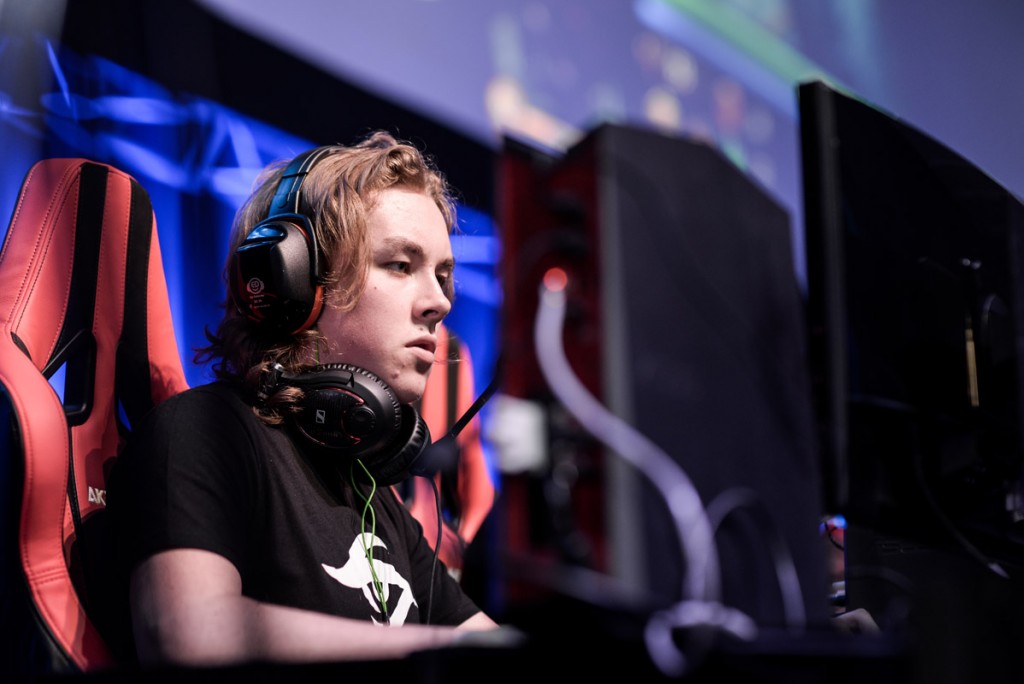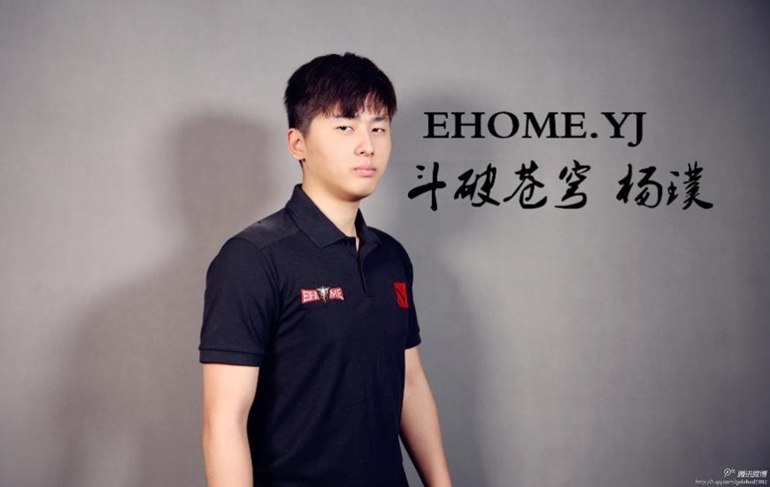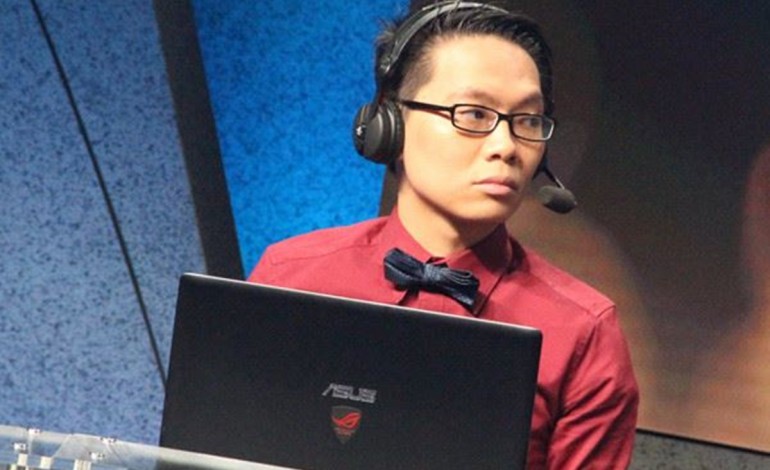The substitute role has recently been introduced to Dota 2. Seventy-three players are listed as substitutes for the 82 teams registered in the first Major. For now, the concept is in a bit of a grey area, however, it seems like the substitute will simply be the go-to stand-in or the only stand-in allowed for Dota 2 teams in the upcoming Majors.
Essentially, the role in its current state puts substitute players in a rather unpleasant position, that of a glorified back-up plan, with little involvement in the team. Chan “WinteR” Litt Binn – former Orange Esports player, currently a caster for Beyond the Summit and a substitute for Fnatic – joins us to discuss how we could expand the Dota 2 substitute role and add a whole new dimension to the game.
“I think if you are a new player with less experience you might want to take a substitute position in order to learn. It all depends on your deal with the team. Majors will be every 3 months, I think 3 months is fine to be a sub, then you can move on afterwards. If I was still playing competitively, I would still take a sub role at Fnatic, because I am good friends with them and I felt like I have unfinished business with Mushi since TI2. But my deal with Fnatic is different from others, I think,” Chan “WinteR” Litt Binn said.
The current Dota 2 substitute seems to be an available replacement waiting to be used only when a main member of a team cannot make it to one of the Major tournaments for some reason. It is not the most pleasant position for a player to be in. In fact, it does not really help the team that much either, as they will most likely not practice with their substitute anyway, expecting to attend the tournament with their main roster.

WinteR is listed as a substitute player for Fnatic © WinteR’s Twitter page
“Some subs could be useful, like a coach for example – another set of eyes for the team during tournaments. It depends on how the team uses the sub and what the sub is getting from the team,” WinteR said.
The only time a substitute player could be useful to the team – unless he is more than just a substitute – is if the team knew in advance that one of their players would not be able to attend the tournament. But, how much in advance can a team actually know?
The most common scenario that could see a player unable to attend an event would be prompted by visa issues. Usually, a person can apply for visa a couple of times. By the time the denial is final, the team wouldn’t be left with enough time to get a good synergy with their stand-in, anyway.
In conclusion, more often than not, unless the substitute is occupying some other position within the organization (coach, team manager etc.), he finds himself in an unpleasant situation: a player that a team doesn’t really want to use, but would still like to have listed on the roster, just in case. Unless a player is not willing to play competitively at the time, odds are he wouldn’t like to be put in this position and would rather play with a different, even weaker team instead. But what if it wouldn’t have to be this way?
In other team sports, it is allowed to change players during a match. Not only injured players, but also under performing or tired players can be replaced. However, those are not the only reasons to make replacements within a team. The measure also provides a possibility for a different setting on the pitch and a change of tactics. This adds another field for teams to compete in and makes it more interesting for spectators to watch. Why wouldn’t we introduce such additional “spice” into Dota 2?

Ludwig “zai” Wåhlberg is listed as a substitute for Evil Geniuses, after deciding to take a break from the competitive scene for a year, in order to focus on his studies. © DotaBlast
If Valve would allow swaps, players could specialize on playing specific heroes even more and teams would be able to develop more strategies. Teams might not like it at first, of course, since training with more than five players at once would take more work.
While changing players during the game itself in Dota wouldn’t work, swapping them in and out during a series would make much more sense. Teams could attend events with a roster larger than five, for example seven players. Then, the captain could pick which five players would actually play.

William “Blitz” Lee is listed as a substitute player for Team FIRE © Helena Kristiansson/ ESL
This would be a way of making substitutes involved players rather than just stand-ins waiting to be needed some day. A different and probably more interesting idea would be to decide which of the seven players would play after the drafting phase is finished. This format would make things much more unpredictable and, because of that, a lot more exciting.
What would be the benefits of using more than just five players during a series? Firstly, it would allow professional players to specialize even more. Right now, most players specialize in just one out of five roles. By having more than five active members on a roster, players could afford the “luxury” of becoming more specialized.
For example, a team could have a player who is purely a jungler and swap him out with a position 4 who plays in lane, depending on what they want to run that game. Or they could have a dedicated carry player for aggressive, early game focused heroes and another one specialized in passive, late game heavy cores.
“I think it would definitely lead to more specialization,” WinteR agrees. “If you need to play only one role, then you can really focus on it and be exceptional on it. Like Bulldog playing a few thousand games of Syllabear.”
With more specialization comes higher level of play, which translates into greater games. Having the option of rotating multiple very specialized players would allow a captain to run a wider range of strategies. Additionally, this would also encourage using more pocket strats and trying to surprise the opponent more often. All of this would add another dimension to the game and make it more interesting.

Yang “YJ/Zyf” Pu – former TI5 contender with EHOME – is listed as a ViCi Gaming substitute for the first Dota 2 Major
Such usage of active, involved substitutes would also be a very good way of introducing new players to the competitive scene. However talented they might be, inexperienced players are often known to have slim hero pools, which might discourage teams to give them a chance.
WinteR tends to agree with the idea: “Maybe it could work in favor of new players. You never know until you try. It could be a good idea, some players just didn’t get the opportunity.”
In this format, players who master only one hero can still be useful to a team. If the captain wants to draft that hero, he can use the player, if not, nothing is lost – he can pick a different player, with a wider hero pool, but maybe not as good at that one particular hero.
Another advantage of using more than five players constantly would be a better roster stability. Losing one player wouldn’t be followed by destabilization of the roster and a long period of trying out new players. The team could easily still compete by relying on the other members of the squad, that already have a good synergy and are available to step in at any time.

Rasmus “Chessie” Blomdin currently acts as a coach and a substitute for Ninjas in Pyjamas.
Of course, the format is not perfect. More salaries for the organization to pay and more logistical issues for tournament organizers to take into account. However, with more and more money floating into the scene, that probably will be less of a problem in the near future.
Another problem with the system is that when a team consists of 7 players it is much harder for them to practice. Some of the members have to be left out while the others are training. Good planning of the practice sessions or extending the roster of a team to 10 players and picking 7 for a tournament could probably solve the issue, but this is a topic for another discussion.
All in all, if this format would ever come to be applied, not only the substitutes would actually be useful and valuable to the team instead of being only a back-up plan, but also the competition would become a lot more strategized and interesting. The drafts would be more exciting, more unpredictable strategies would be used and a higher level of Dota would be displayed – all of that for the viewing pleasure of the fans.





Leave a Reply